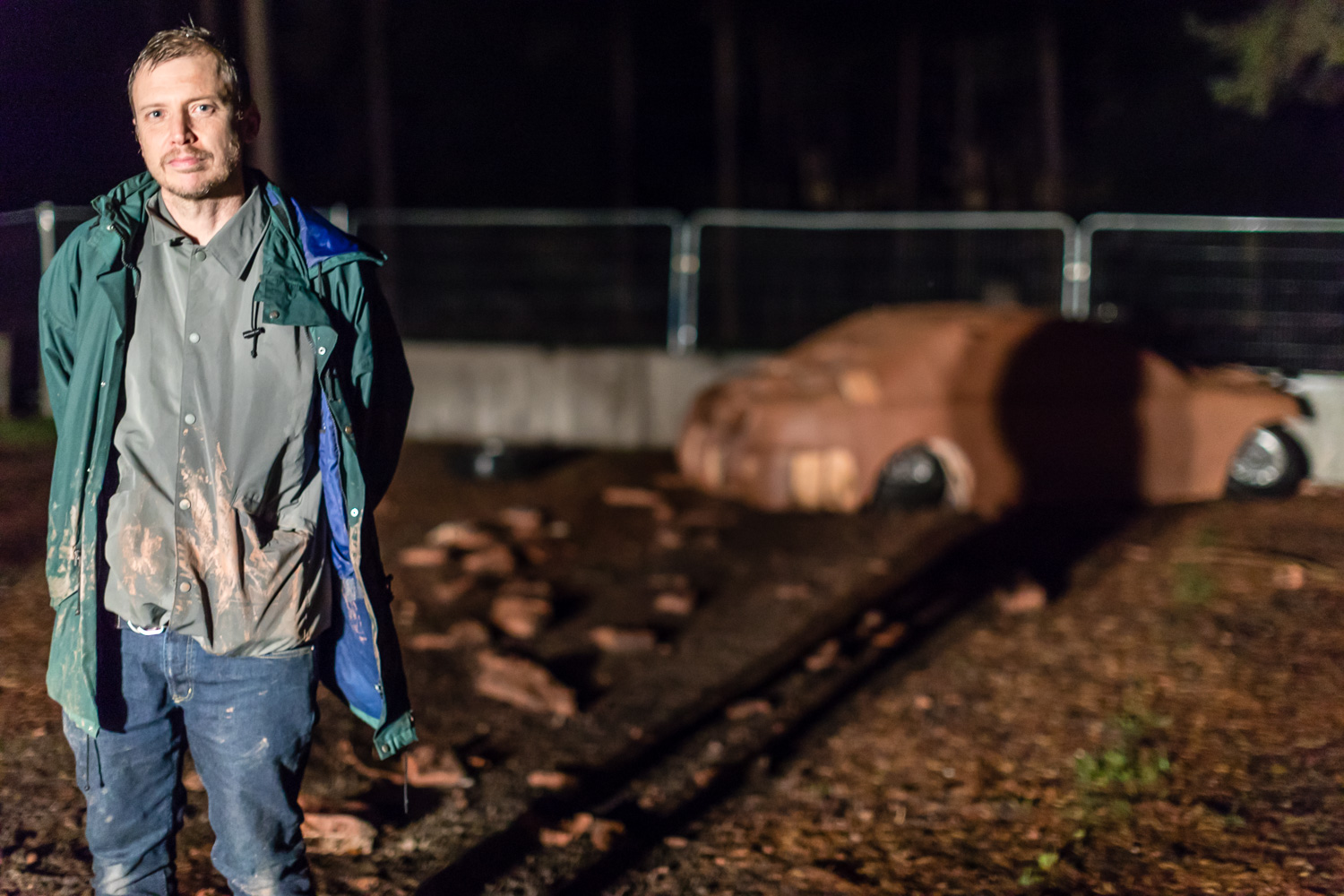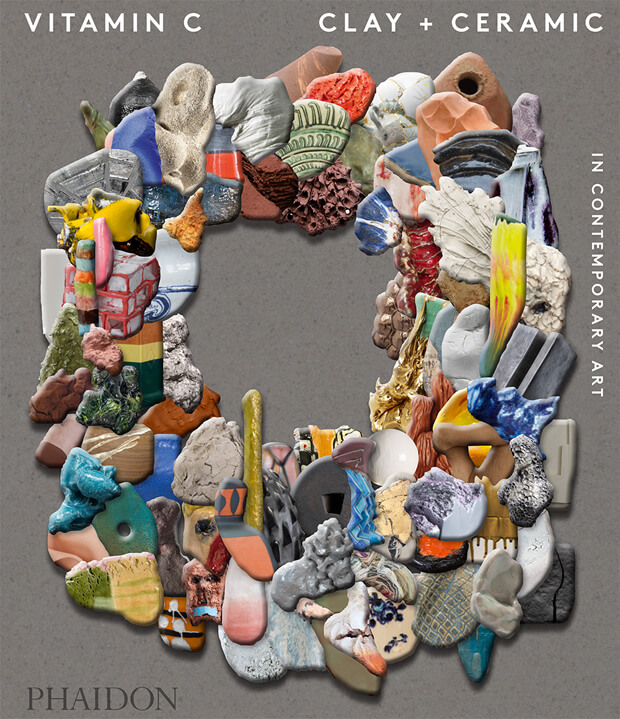
Keith Harrison - Why I Create
Exploring the inspirations and attitudes of artists working with clay and ceramic, featured in Vitamin C
British artist Keith Harrison frames his work as a catalyst for live processes and areas of practice not commonly associated with ceramics. He says, "I am interested in what happens when you activate a material. This sense of switching on, or making a material live has connotations back to music and performance in a broad sense. I always want to see what a material can do when you put it under duress." Like any experimental approach – in say physics and engineering, or cultural disciplines including music, dance or architecture – controls are loosened and elements staged in relation to each other precisely to amplify contingency, test limits and produce unexpected results.
Here, the Vitamin C: Clay and Ceramic in Contemporary Art featured artist tells us how an early school mishap pushed him into ceramics, why he thinks the closure of certain courses may have freed up clay, and what he plans to do with a new soundsystem he is building.
Who are you and what’s your relationship to clay and ceramics? I'm the sum of a number of near misses, accidents, failures, luck and chance. My connection to ceramics followed a similar trajectory. Due to an unfortunate incident during my first ceramics session on the pre-degree Foundation course at Bournville Art College, Birmingham I was banned from the pottery room, so had to work with clay in another workshop and without access to a kiln. Inadvertently this set up a precedent for a way of working that I seem to have adopted since and a general feeling that I'm in the wrong room.
After Foundation I studied Industrial Design at Cardiff but felt I wanted to work to a broader agenda so made the decision to leave at the start of my second year. I thought about going to Brighton but on the suggestion of Art History tutor Paul Greenhalgh during a brief conversation in a lift, I applied to transfer to the Ceramics department.
Why do you think there’s an increased interest around clay and ceramics right now? On a practical level it's because clay is a cheap material that offers a tactile immediacy and a counterpoint to screen based media. Working with clay connects to an ancient lineage stretching back to the earliest surviving ritualistic and functional objects that span art, craft and design. As specialist ceramics degree courses have unfortunately declined in the UK it feels like the use of clay as a material has been released from some of its former definitions and allegiances.
Although the course closures were a painful process, clay seemed to remain as a non-aligned material option in art colleges and has subsequently been rediscovered by a new generation of artists and designers. The history of ceramics feels similarly disassociated and available for appropriation. In particular, aspects of its more recent past, such as the urban idealism of studio pottery and the social collectivity of evening classes, are being looked at afresh.
Ceramics is sometimes regarded as decorative, rather than fine arts. Does the distinction bother or annoy you? For me ceramics can be decorative, fine art and both at the same time. The distinction doesn't really bother me because the material has such a broad range of applications that are not restricted to the visual arts; ceramic materials are found everywhere, from superconductors to sunblock. I think the more important decision is where to situate the work, context is everything in this respect. With regards to freedom, having specialised in ceramics at art school, sometimes I've felt I should use clay when perhaps another material might have better served the idea. Since working on more recent projects with other materials that have the capacity to change state I now feel I'm working with clay because of what it has to offer rather than through expectation or obligation. The permission I've given myself to not have to use clay does feel like more freedom and, predictably perhaps, has made me want to use it more.
Whose work in this field do you admire? Seeing Gillian Lowndes' work for the first time in the late 1980's in London was a revelation - on a par with the exhibitions I visited as a teenager at the Ikon Gallery and some of the bands I saw at Birmingham Odeon and the Powerhouse around that time. Up to that point I didn't realise what Gillian Lowndes did was even a possibility for ceramics. I found the objects utterly compelling, they had such an enigmatic, almost throw-away quality to them, desiccated, apocalyptic, ancient and modern.
What are the hardest things for you to get ‘right’ and what are your unique challenges? Through excitement about an idea I often end up setting myself ambitious challenges in terms of scale and process, a hope over logic scenario. Possibly the hardest thing is finding the right tension between anticipation and actuality, control and chaos. In the lead up to a show there is a good deal of pre-planning and precision in the set-up but I'm concerned that the event itself should be about a move into unknown territory for all parties. I've learnt that the coming together of unlikely social groups to witness an event can create a friction in itself that has led to some unexpected participatory consequences. Sometimes, with larger audiences present I feel a pressure that the work should entertain, I try to hold my nerve. As a result, I'm sure the outcome could be underwhelming for some but it's important to me that all possibilities are there at the start of the work, with the prospect of the spectacular to the very subtle, to nothing happening at all.
What part does the vulnerability of the material play in things? It's there in the activation of works, trying to affect a material change using electrical - heating or sound - systems. In many ways I see clay as a pretty robust material, certainly when in a plastic and fired state. The stage between raw and cooked is what I'm most drawn to, the possibility of making something permanent and knowing there is a chance that this act could also destroy it. I think it's in this uncertain endeavour and the accompanying wilful optimism where the work and the vulnerability reside.
Is how you display a piece an important element of the work itself? The display is intrinsic as the works are process-driven temporary events and installations, often interactive and as much about how a piece might function within a given space as considerations of form, proportion and scale - which generally happens at an earlier drawing stage. As I tend to work mainly by application, invite or commission in public galleries, museums and (more recently) outdoor sites, it's nearly always a negotiation on the curation of the work for a venue and managing the level of risk that might be involved.
What’s next for you, and what’s next for ceramics? Joyride, the Jerwood Open Forest commission I've been working on since last November is next up on September 30 at Tackeroo in Cannock Chase Forest and also an Arts Council funded commission for the British Ceramics Biennial/Stoke Libraries called Knowledge is Power opening the week before. After that I'm developing a soundsystem as part of a collaborative work for a national tour of experimental music called Outlands in 2018-19. I've no idea what's next for Ceramics.

Clay and ceramics have in recent years been elevated from craft to high art material, with the resulting artworks being coveted by collectors and exhibited in museums around the world. Vitamin C: Clay and Ceramic in Contemporary Art celebrates the revival of clay as a material for contemporary artists, featuring a wide range of global talent selected by the world's leading curators, critics, and art professionals. Packed with illustrations, it's a vibrant and incredibly timely survey - the first of its kind. Buy Vitamin C here. And if you're quick, you can snap up work by some of the artists in it at Artspace here.